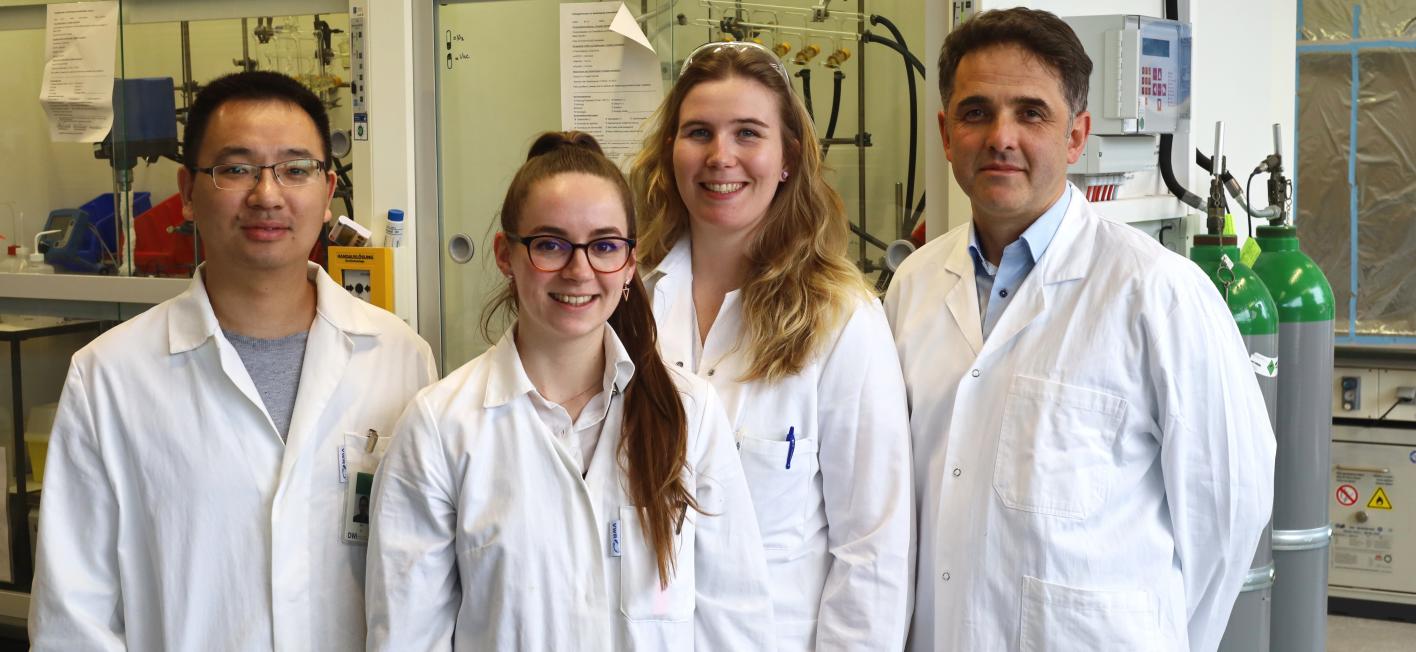Biobased microgels with therapeutic function
Scientists from DWI - Leibniz Institute for Interactive Materials, Zhejiang University of Technology and Donghua University have developed biodegradable microgels loaded with antibiotics. The results give hope that with their help it will be possible to improve the therapy of chronic inflammatory bowel diseases in the future.
Crustacea-based transport container
Researchers in Andrij Pich's group, together with colleagues from China, have succeeded in developing the basis for a targeted drug delivery system for the treatment of chronic inflammatory bowel diseases. The starting point of the carrier system are so-called microgels: These are tiny particles that have a fixed size and can be loaded with active ingredients. The microgels thus function like small transport containers. In this case, the team placed the antibiotic vancomycin in the microgels. The researchers used chitosan as the basis of the transport containers. Chitosan is a naturally occurring biopolymer that can be extracted from crustacea such as shrimp, and has emerged as a promising candidate for new drug delivery systems in medicine.
Special requirements for use in the intestine
For antibiotic-loaded chitosan microgels to be considered as a treatment option for inflammatory bowel disease in the future, they must have certain properties and meet certain requirements. These include, among other things, that they release the active ingredients precisely in the region of the digestive tract where they are needed. This means, for example, that they must be able to pass through the acidic environment in the stomach unharmed and must therefore be acid-resistant. In addition, the active ingredients should not be released in healthy regions of the intestine, but only in diseased regions where they are needed.
Imitation of the inflamed intestine in the test tube
In their further experiments, the researchers investigated whether and how the properties of the microgel particles changed when they were exposed, for example, to the mimicked acidic environment of the stomach. In another experimental setup, they looked at how the chitosan microgel particles behaved in the simulated environment of an inflamed intestine. What is special about this environment is that high amounts of so-called lysozyme are released in the inflamed intestine. This endogenous substance has an antibacterial effect and is an important component in the defense against bacterial infections.
The results show that the microgel particles remain stable at low pH. This suggests that they could remain intact even when passing through the acidic stomach. In addition, the researchers observed that the antibiotic entrapped in the particles was released very reliably in the presence of lysozyme while almost no vancomycin was released from particles in an environment without lysozyme. These results provide initial evidence that the microgel particles may traverse healthy intestinal segments, where lysozyme concentrations are normally not so high, and only in diseased intestinal regions are the active ingredients released. Initial tests on the antibacterial effect of the vancomycin microgel particles also showed that pathogens of the Staphylococcus aureus bacterial strain could be killed with the help of the particles. Finally, the research team investigated the biocompatibility of the microgel particles using an intestinal cell model. Here they found in initial investigations that the chitosan microgels have satisfactory biocompatibility and can be considered as drug carriers. The promising results will now be validated in further studies.
High demand for new treatment options
Inflammatory bowel diseases are among the most widespread diseases worldwide. They are associated with many complications that cause high levels of distress in sufferers. Common forms of therapy include the use of antibiotics and immunosuppressants, which are taken orally. In order for the active ingredients to get past the stomach to their site of action (the inflamed intestinal regions), patients often have to take the drugs in high doses. This in turn leads to serious side effects, such as damage to the beneficial microbiome and the development of drug resistance.
Consequently, there is a great need to develop drug carrier systems for medicine which, on the one hand, pass the stomach and its acidic environment undamaged and, on the other hand, enable controlled release of the drugs in the affected region of the intestine.
Click here to access the original publication in the Journal of Advanced Research.

